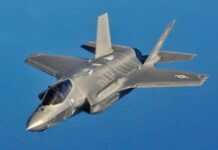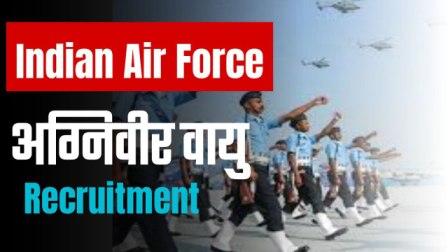A first of its kind model, Tour of Duty (ToD), for short term recruitment of jawans into the three Services of the armed forces for a period of four years is all set to be rolled out soon, with officials indicating that the announcement is expected later this month.
What is the ‘Tour of Duty’ model?
This model of recruitment would let young individuals voluntarily serve for a temporary period of three years.
- It will be a voluntary engagement.
- It is for youths who “do not want to make defence services their permanent vocation, but still want to experience the thrill and adventure of military professionalism”.
- The proposal is a shift from the concept of permanent service/job in the Armed Forces, towards ‘internship’/temporary experience for three years.
- While the original proposal in 2020 would have extended the ToD to officers as well, it’s now being restricted to jawans, as officers already have the Short Service Commission (SSC) route.
Benefits for citizens and the country:
- It will help to “channelise the youth energy into positive utilisation of their potential”.
- Rigorous military training and habits inculcated will lead to healthy citizenry.
- The entire nation will benefit from “trained, disciplined, confident, diligent and committed” young men or women who have done the three-year service.
- An “initial survey” has indicated that the corporate sector will prefer to hire such youths rather than fresh graduates.
Need for:
- The Army’s pay and pension bill has been increasing steeply over the years, accounting for 60% of its budget allocation.
- According to a report of the Standing Committee of Defence, 2019, the deficiency in officer cadre of the Indian Army stood at approximately 14 per cent.
- Advocates of this scheme also cite “resurgence of nationalism and patriotism”, and the fact that “unemployment in our country is a reality”.
Benefits for the government:
- There are immense financial benefits to the organisation due to reduction in pay and gratuity payouts.
- The cost of a three-year service per officer will be a fraction of the cost incurred on Short Service Commission (SSC) officers.
- The cost incurred on an officer, who leaves after 10 or 14 years, is Rs 5 crore-Rs 6.8 crore, which includes the cost of pre-commission training, pay, allowances, gratuity, leave encashment among others. The corresponding cost for a three-year service will be Rs 80 lakh-85 lakh.
- SSC officers have the option to join the service permanently, which further increases the cost incurred, including pension bills.
- For soldiers, who usually serve for 17 years, the Army has calculated a lifetime savings of Rs 11.5 crore per person, as compared to a three-year service.
The idea of ToD was mooted about two years back for a period of three years for both officers and jawans for a limited number of vacancies. However, the fine tuned model will be only for jawans. This move is expected to bring significant reduction in pay and pensions and frees up funds for modernisation especially for the Army, which has a negatively skewed revenue to capital ratio in the budgetary allocation.
After the end of four years, they have to leave and another round of recruitments would be done from them for permanent commission. There will be no automatic conversion of certain percentage to permanent commission but another round of recruitment from among them, the first source explained. This means that there would be no permanent recruitment for the next four years in the armed forces.
The average age profile of personnel in a batallion in the Army is 35-36 years and with ToD, the average age profile in 4-5 years will come down to 25-26 years, the official noted.
On an average, around 60,000 personnel from Other Ranks (OR) retire from the Army every year and Army sources had stated that the pause in recruitments has already started impacting. They also retire much early around an average of 35-37 years of age and the pension continues for a long time. The overall pension burden of ORs and JCOs is much higher than that of officers due to the large numbers and ToD will help reduce that, another official noted.
As per data of December 2021 given by the Government in Parliament, there are 11,35,799 ORs and Junior Commissioned Officers in the Army while there was a vacancy of 97,177 ORs and JCOs. Similarly, there are 63,515 sailors in the Navy and a shortage of 11166 posts while there are 1,38,792 Airmen in the Air Force and a shortage of 4850 Airmen.
Last month, Defence Minister Rajnath Singh said in the Rajya Sabha that on an average, 90–100 Army recruitment rallies are held per year while the Government had informed Parliament that all recruitment rallies planned by Army Recruiting Offices (AROs)/Zonal Recruiting Offices (ZROs) have been suspended till further orders due to the prevailing COVID-19 situation in the country.
In 2020-21, 97 recruitment rallies were planned in 2020-21, out of which only 47 rallies could be conducted and of 47 rallies, Common Entrance Exam (CEE) for only four rallies could be conducted before suspension of recruiting activities. Further, 87 recruitment rallies were planned in the Recruiting Year 2021-22, out of which only four have been conducted so far and no CEE could be conducted. The suspension has led to protests in several parts of the country.
For instance, the Army recruited 53,431 candidates in 2018-19 and 80,572 candidates in 2019-20 while there was no recruitment at all for the next two years. During the same period — 2020–21 and 2021–22 — the number of recruitments made in the Navy and the IAF stood at 8,269 and 13,032 respectively.










